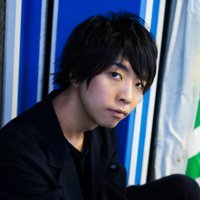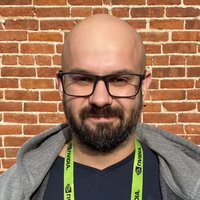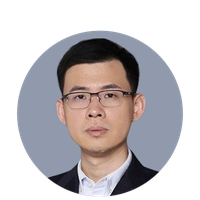In today’s world, quantum computing research has become a heated topic in the development of global technology. Many countries have paid great attention to the advancement of quantum computing, launched national strategic action plans on quantum, devoted great investment into R&D, and carrying out high-level planning for research and application. In the meantime, international industries have also invested in quantum computing. Tech giants like Google, IBM, Intel, and Microsoft are actively promoting the development of the quantum computing industry.
In 2019, Yu He and his colleagues together successfully demonstrated the first two-qubit gate in phosphorus donors in silicon, which fulfills the last DiVincenzo Criteria of the Si:P system for large-scale quantum computation. The research is the milestone result of a vision first outlined by Bruce Kane 20 years ago.
Yu He’s remarkable contribution is acknowledged by Dapeng Yu, an Academician of Chinese Academy of Sciences and a professor from Southern University of Science and Technology, who recommended Yu He to be one of the “Innovators Under 35” and described his work as “it paves the way towards building a large-scale quantum integrated circuit."
Yu’s work has been published as a cover paper in Nature, with Yu being the first author, and also listed as one of the “Top 10 Quantum Computing Experiments of 2019”.
Ever since Yu’s undergraduate time, he has been studying and growing in the field of quantum at the University of Science and Technology of China (USTC). With excellent academic achievements, he was admitted to USTC for a joint master-doctor program.
Yu’s Ph.D. thesis work has been focused on experimental quantum computation and quantum networks in photonics under the supervision of Prof. Chao-Yang Lu and Prof. Jian-Wei Pan. His achievements include a series of pioneering work on the single-photon source, demonstrating dynamically controlled resonance fluorescence spectra in quantum optics, and realizing quantum state transfer from a photon to a distant spin in a quantum dot.
After 2015, Yu He worked as a postdoctoral research fellow in Prof. Chao-Yang Lu's group for half a year. During that period, he mainly worked on the direction of demonstrating quantum supremacy using a boson sampling machine. His team built a photonic boson sampling machine combined with a newly designed multi-photon interferometer, realizing the first demonstration of a quantum computer outperforms the first classical electronic computer ENIAC and the first transistorized computer TRADIC.
The research results have been published in Nature Photonics in 2017 and listed as one of the “Top 10 Scientific Breakthroughs of China” in 2017 by the Chinese Academy of Sciences.




